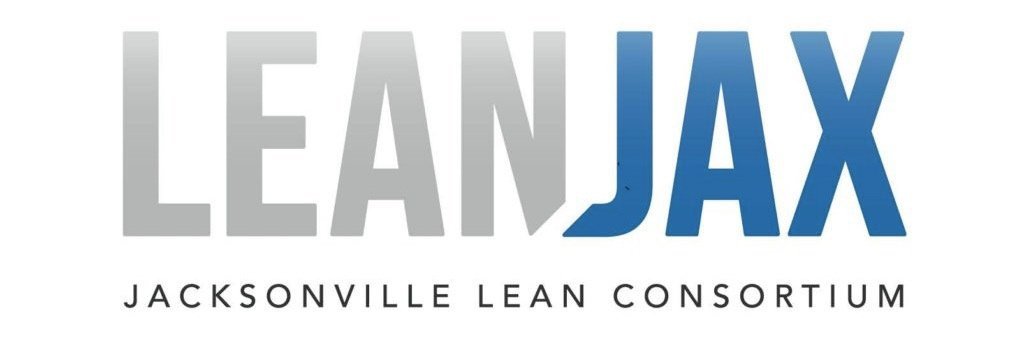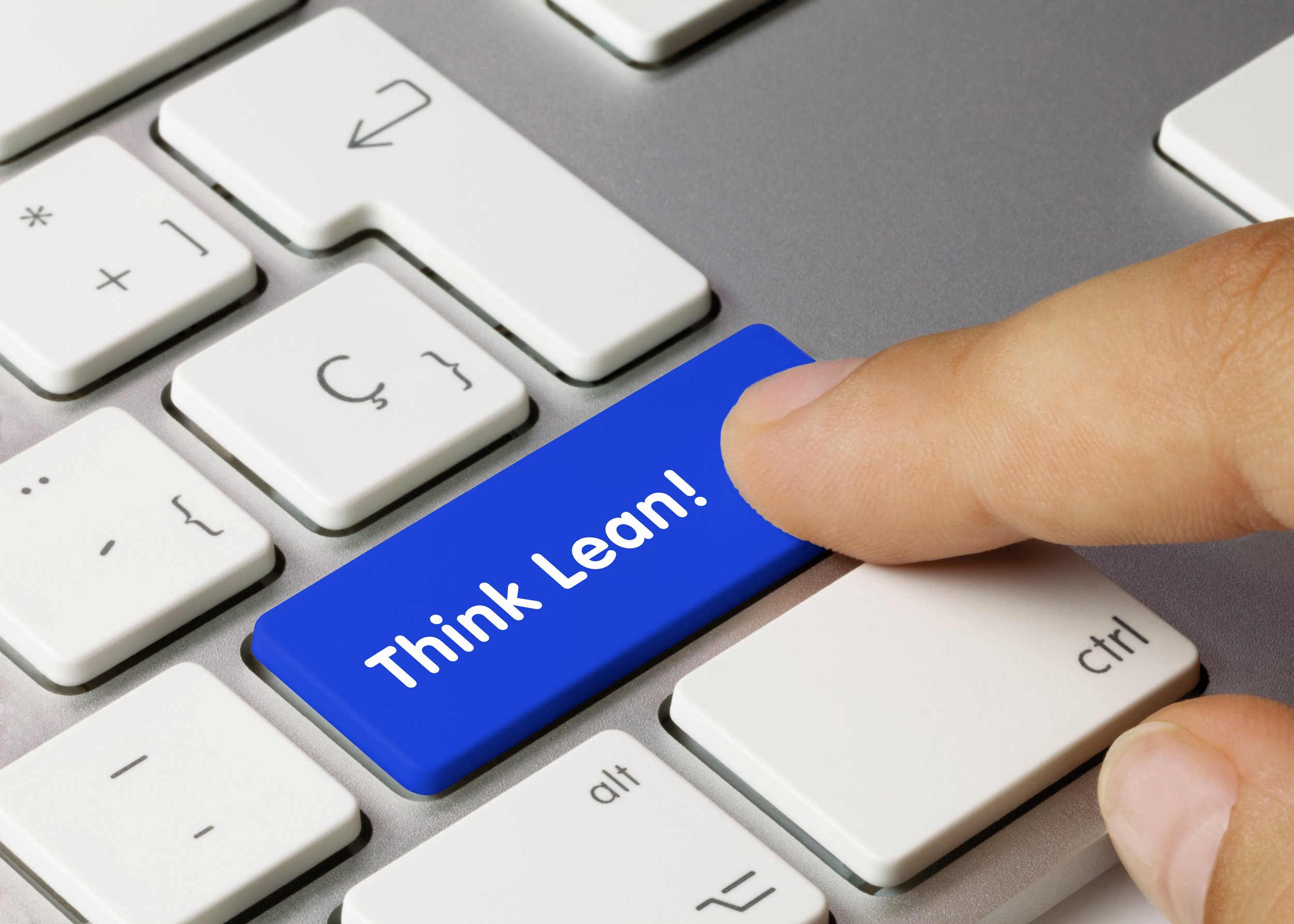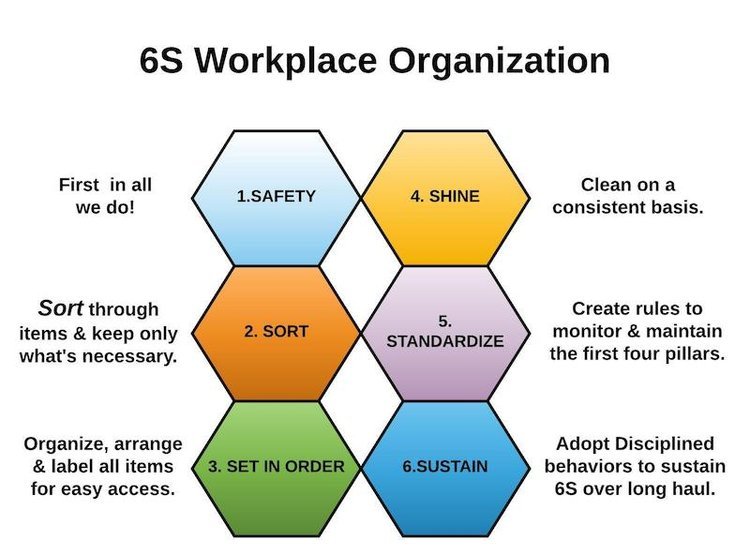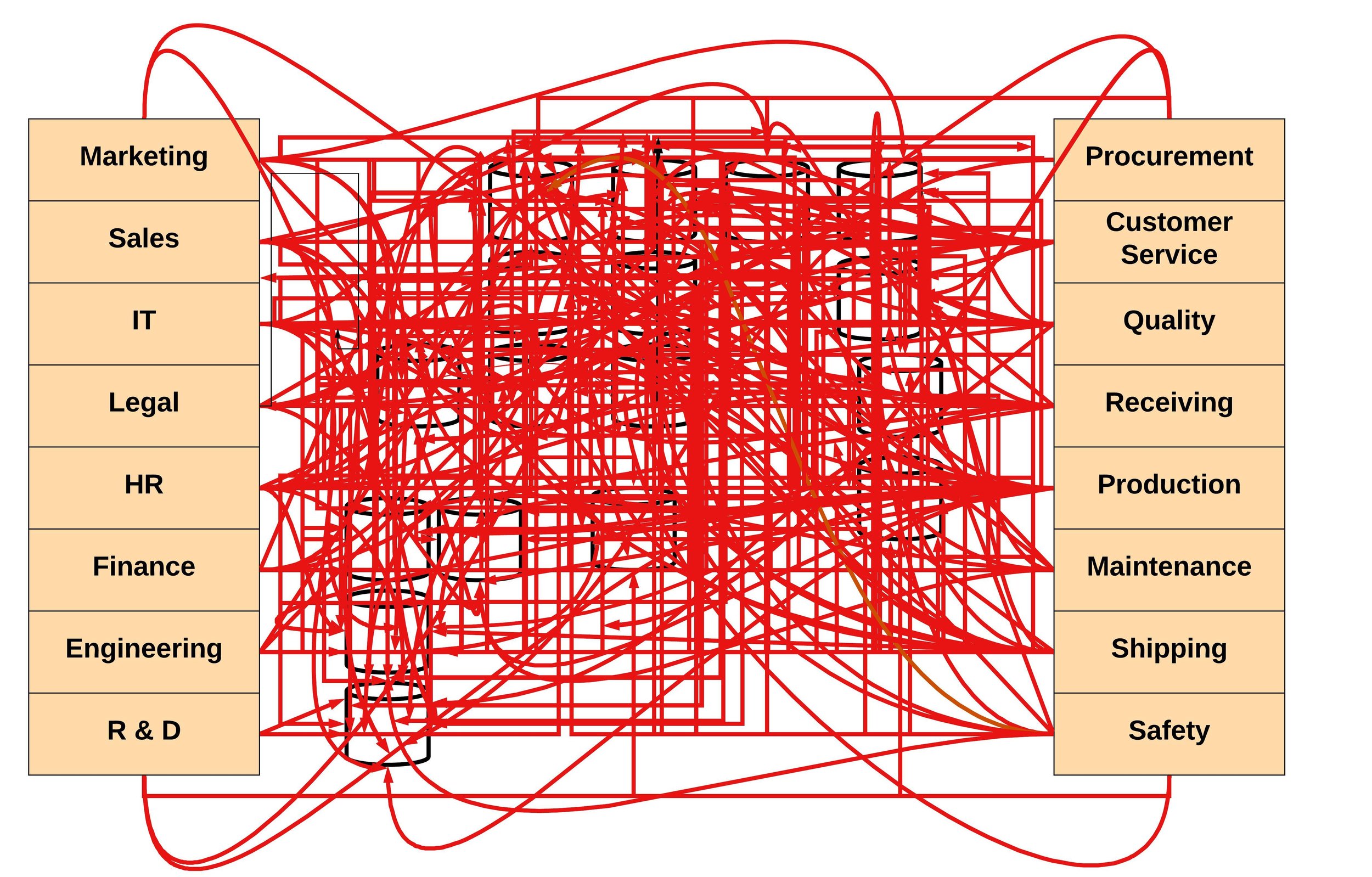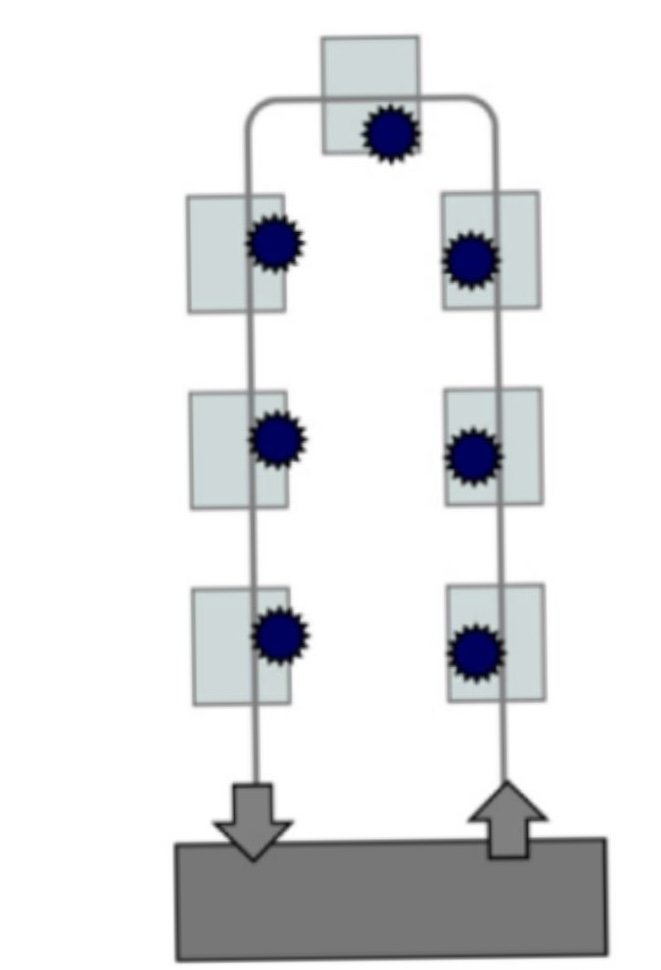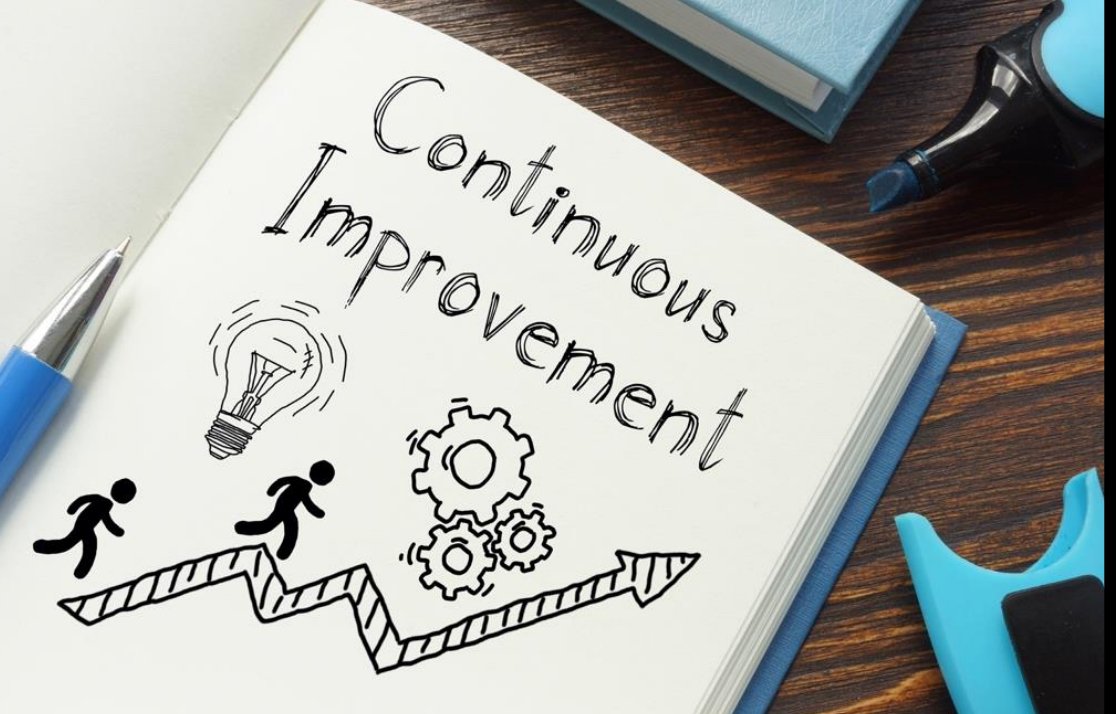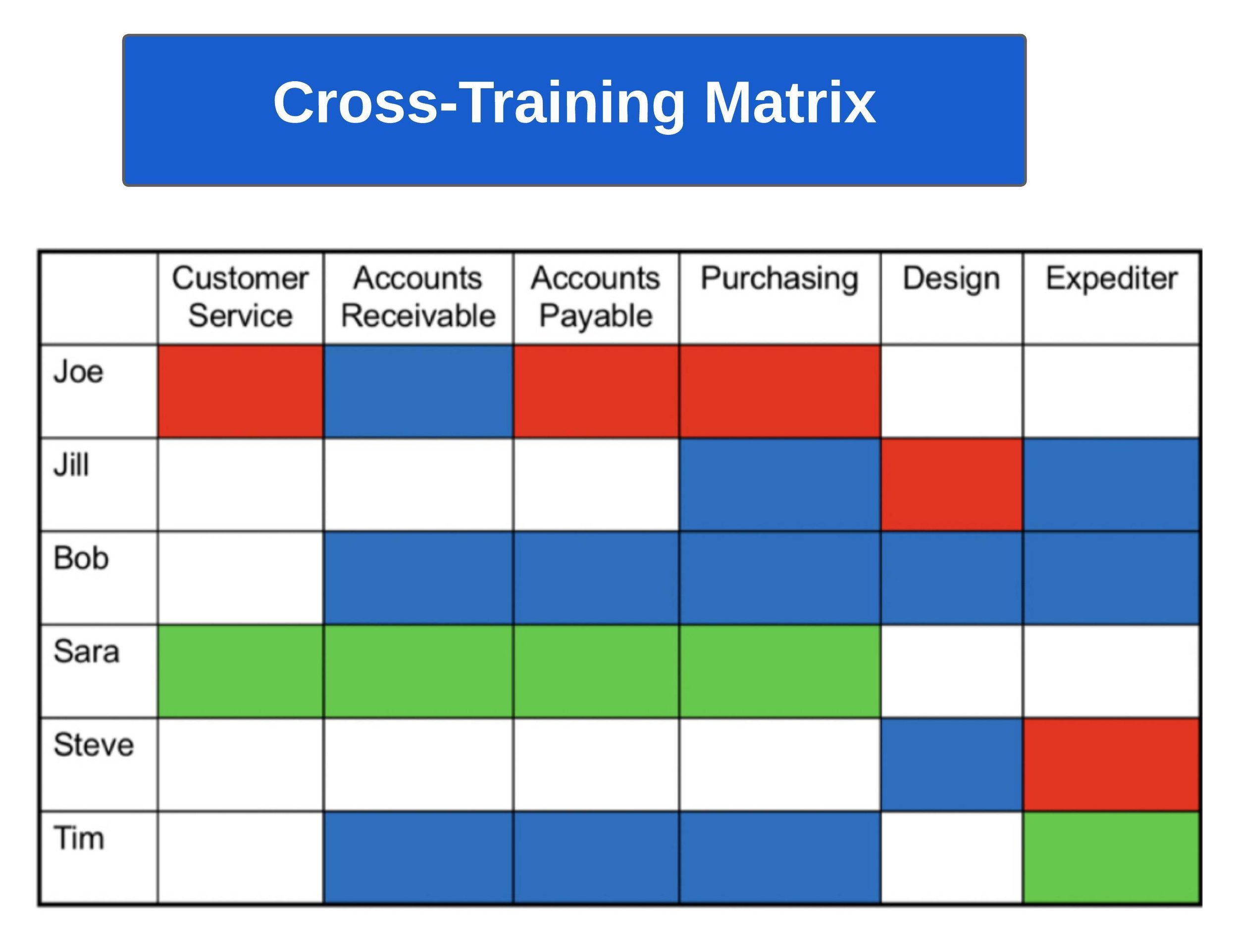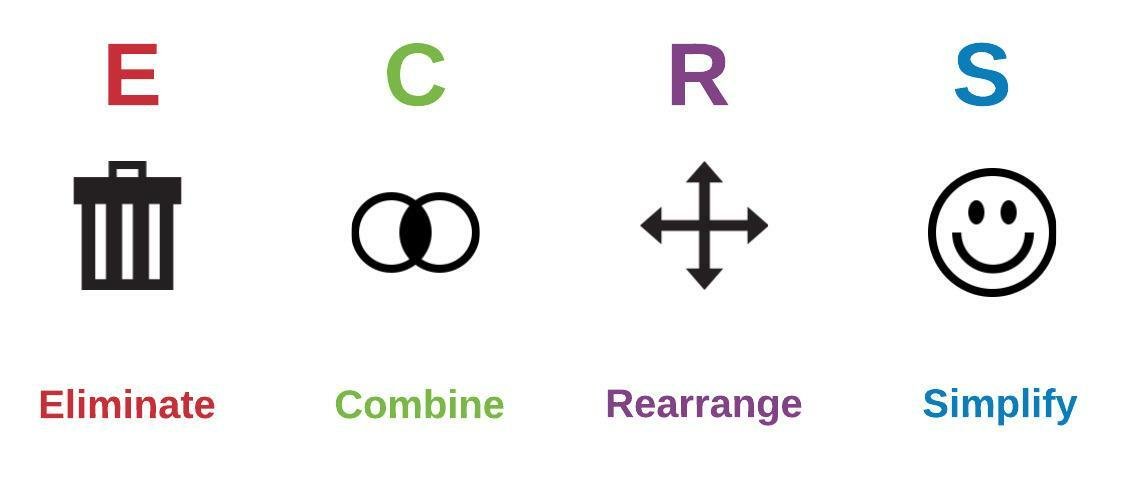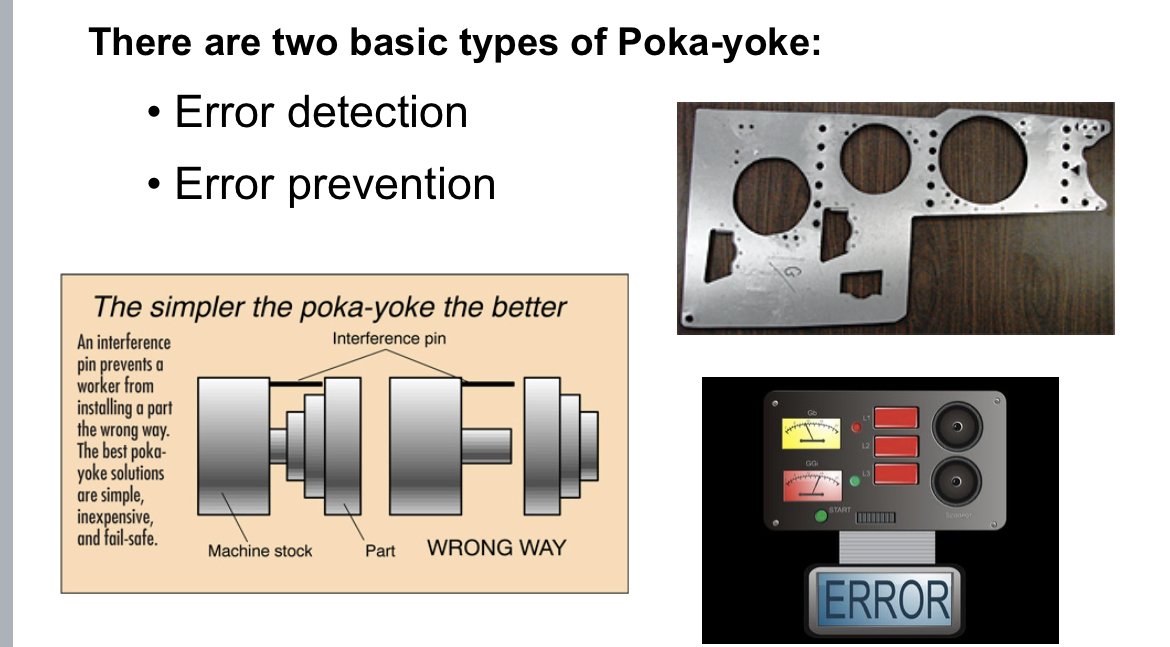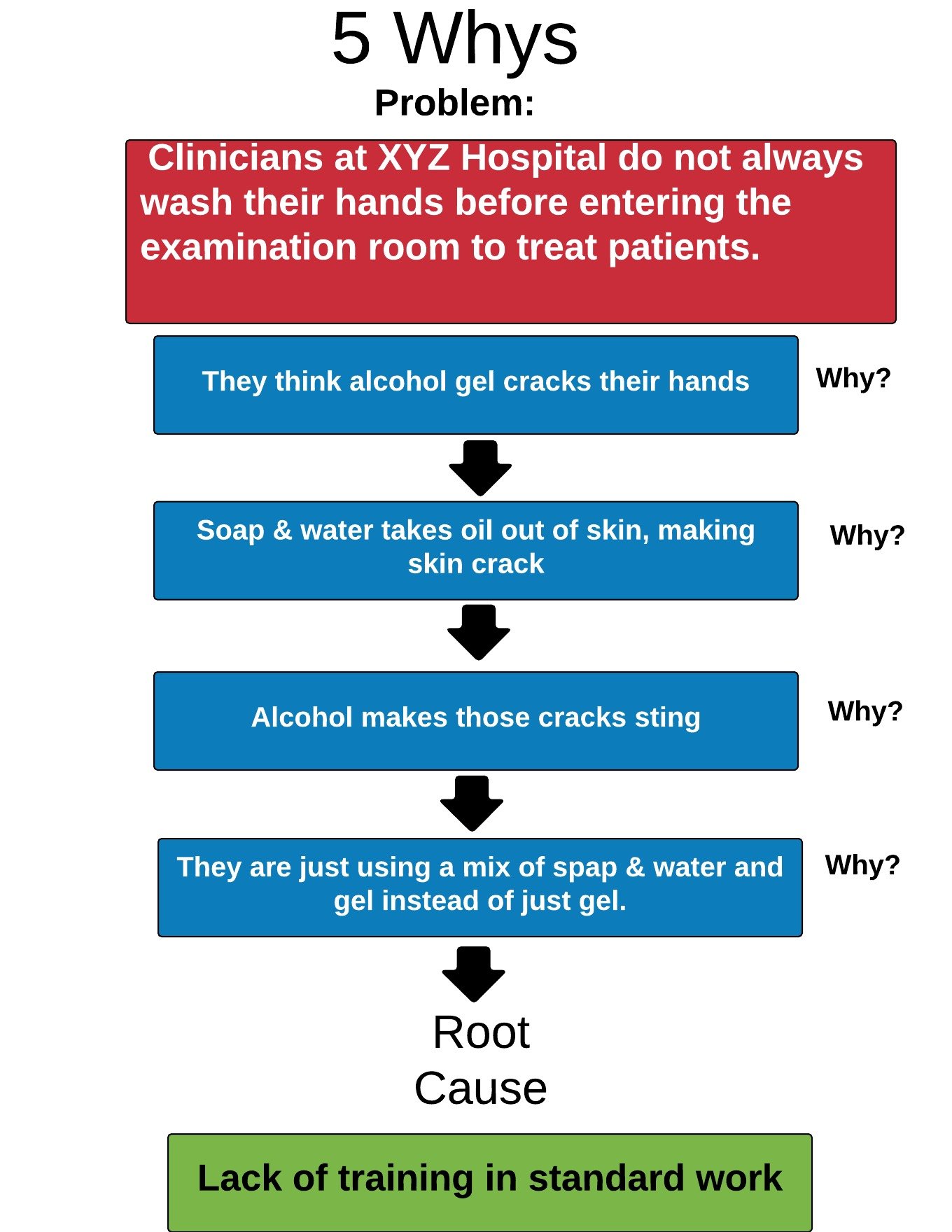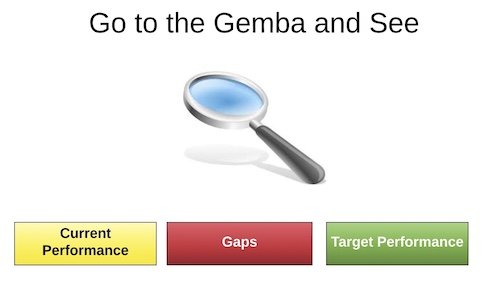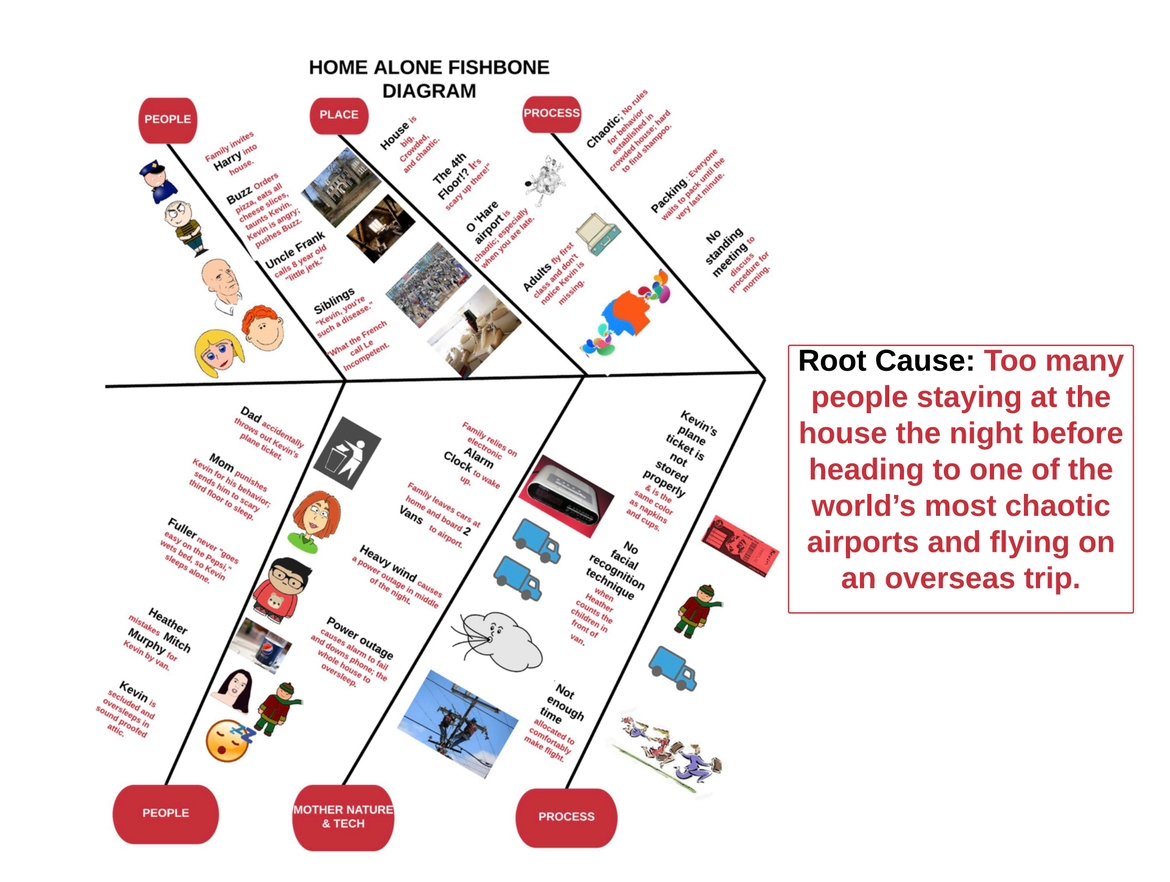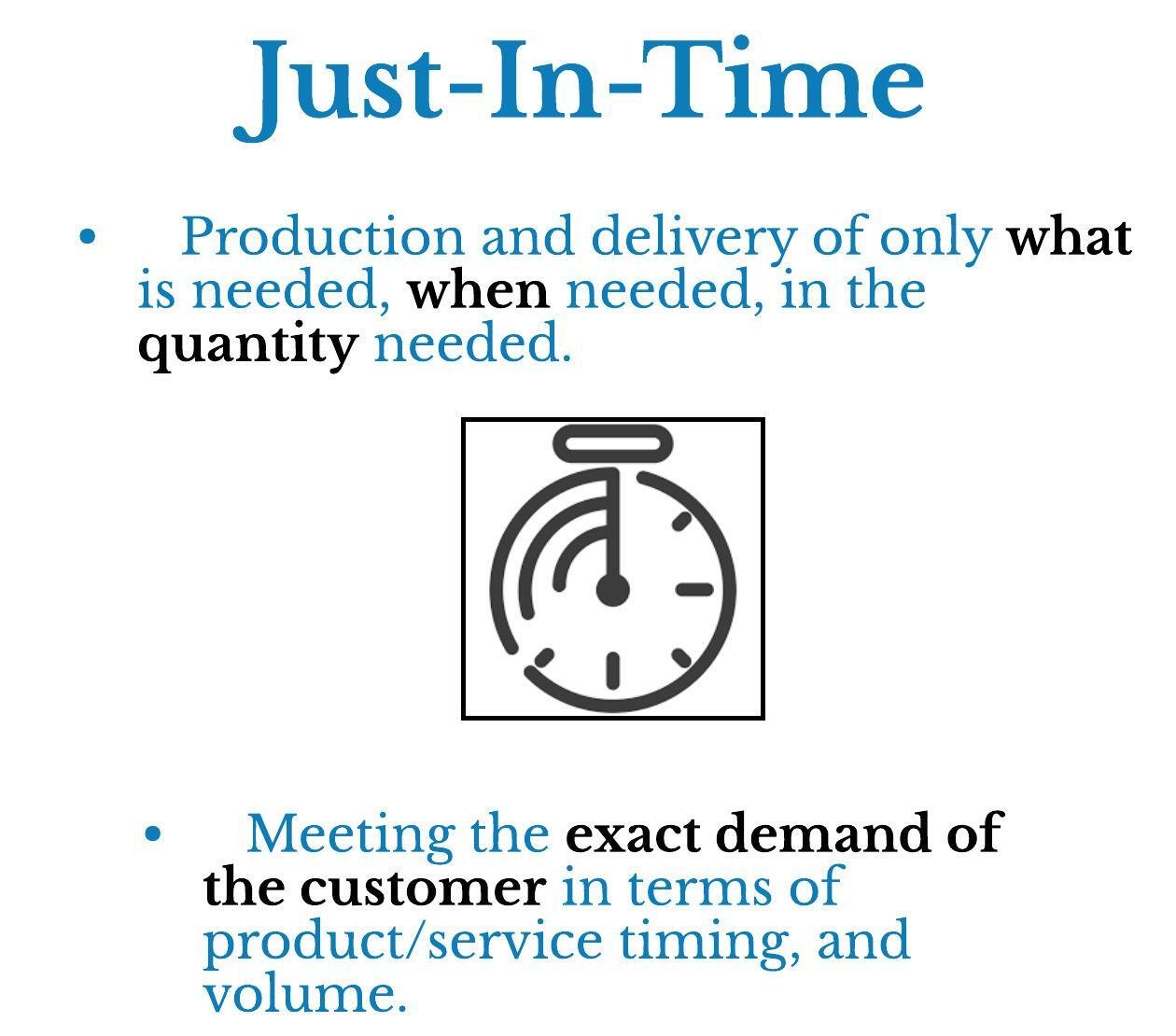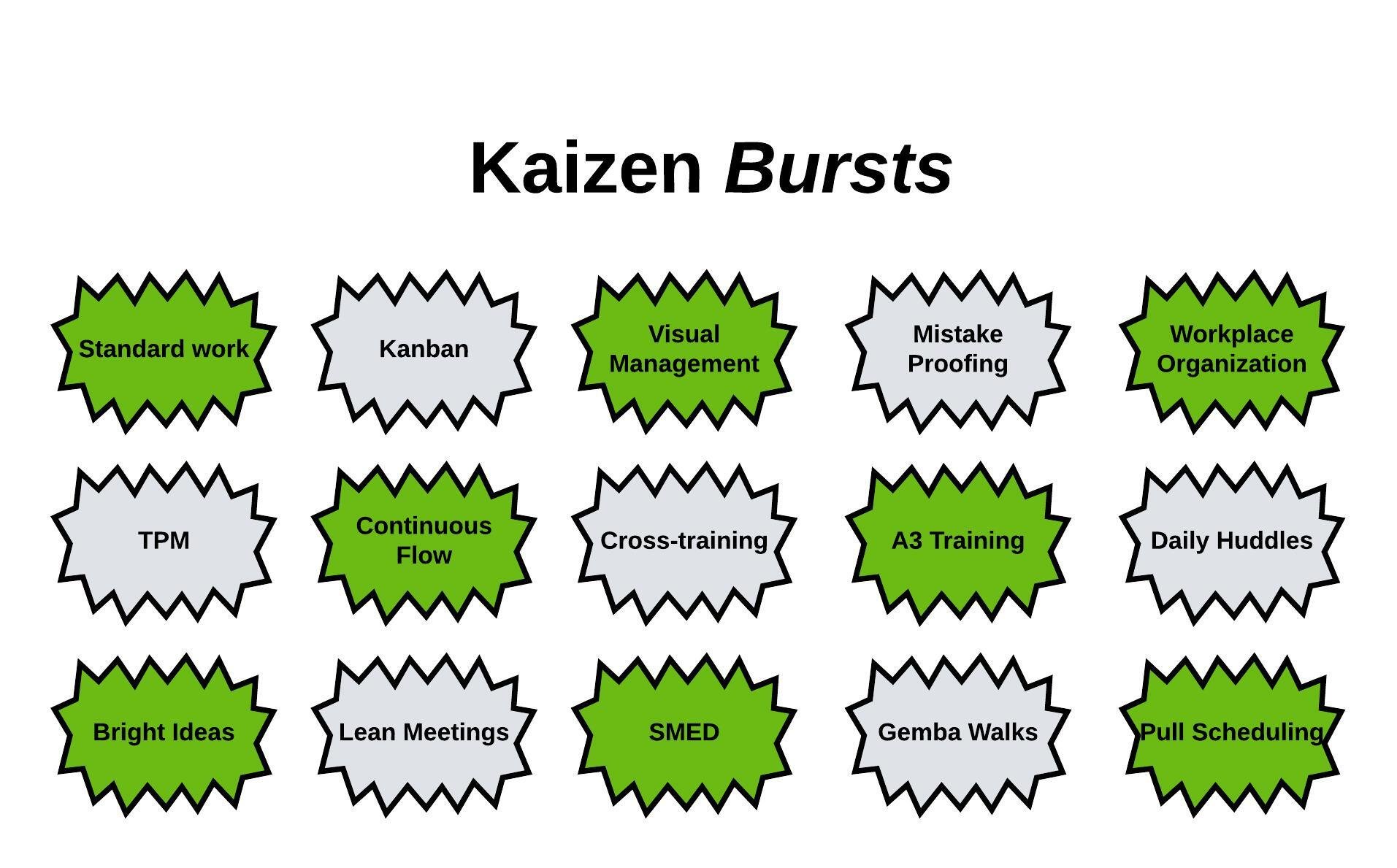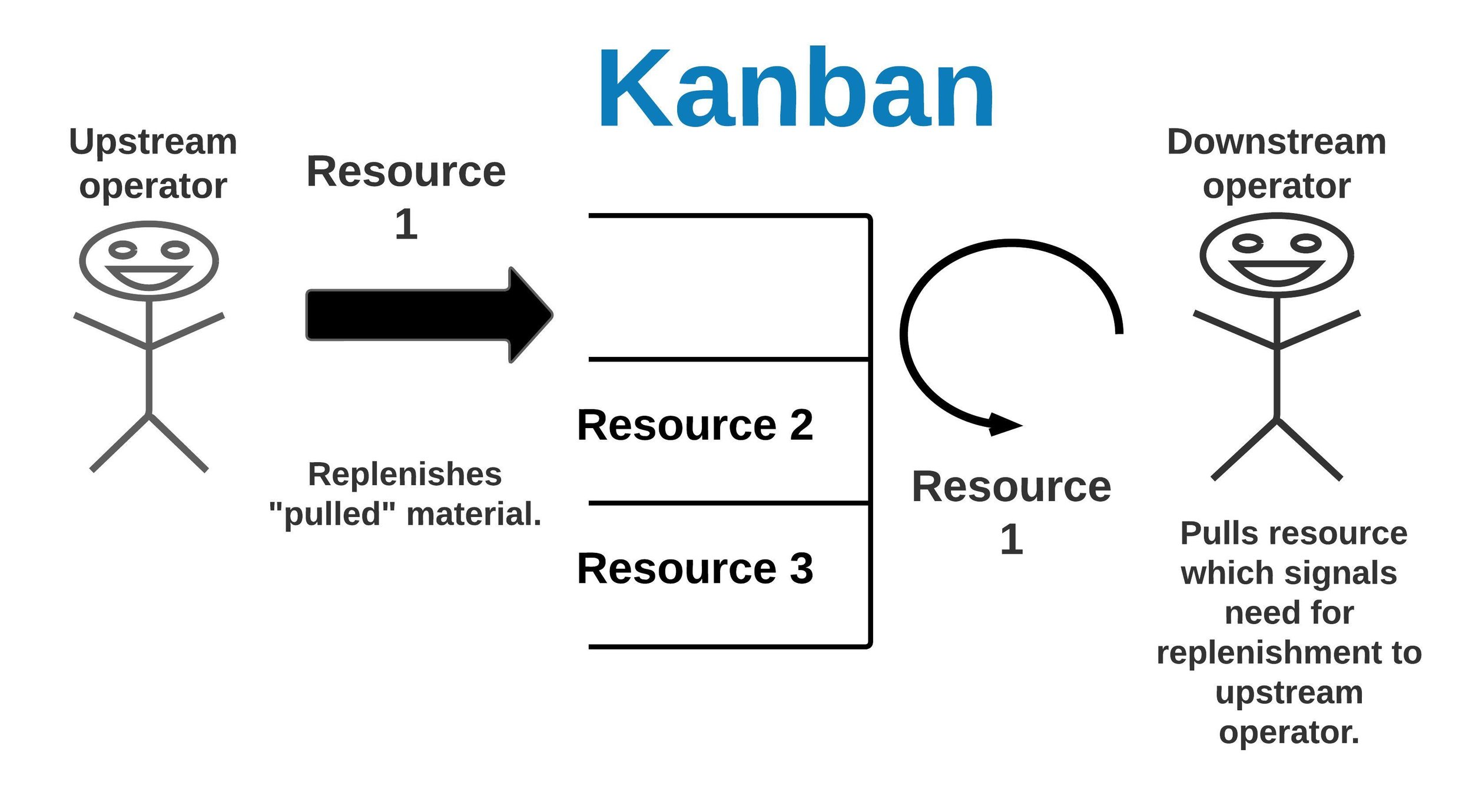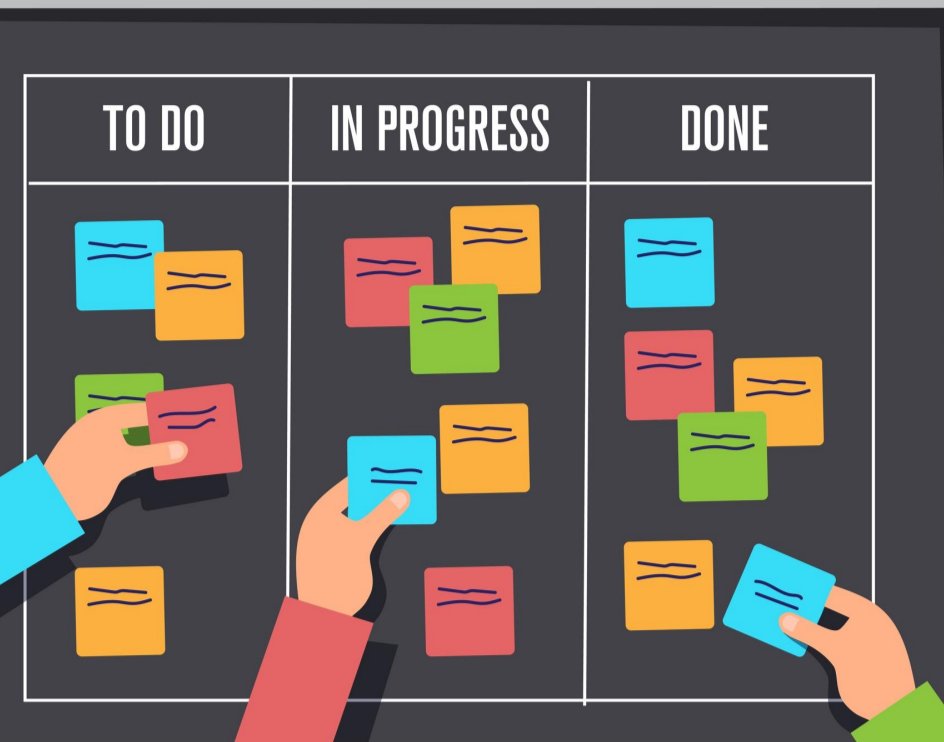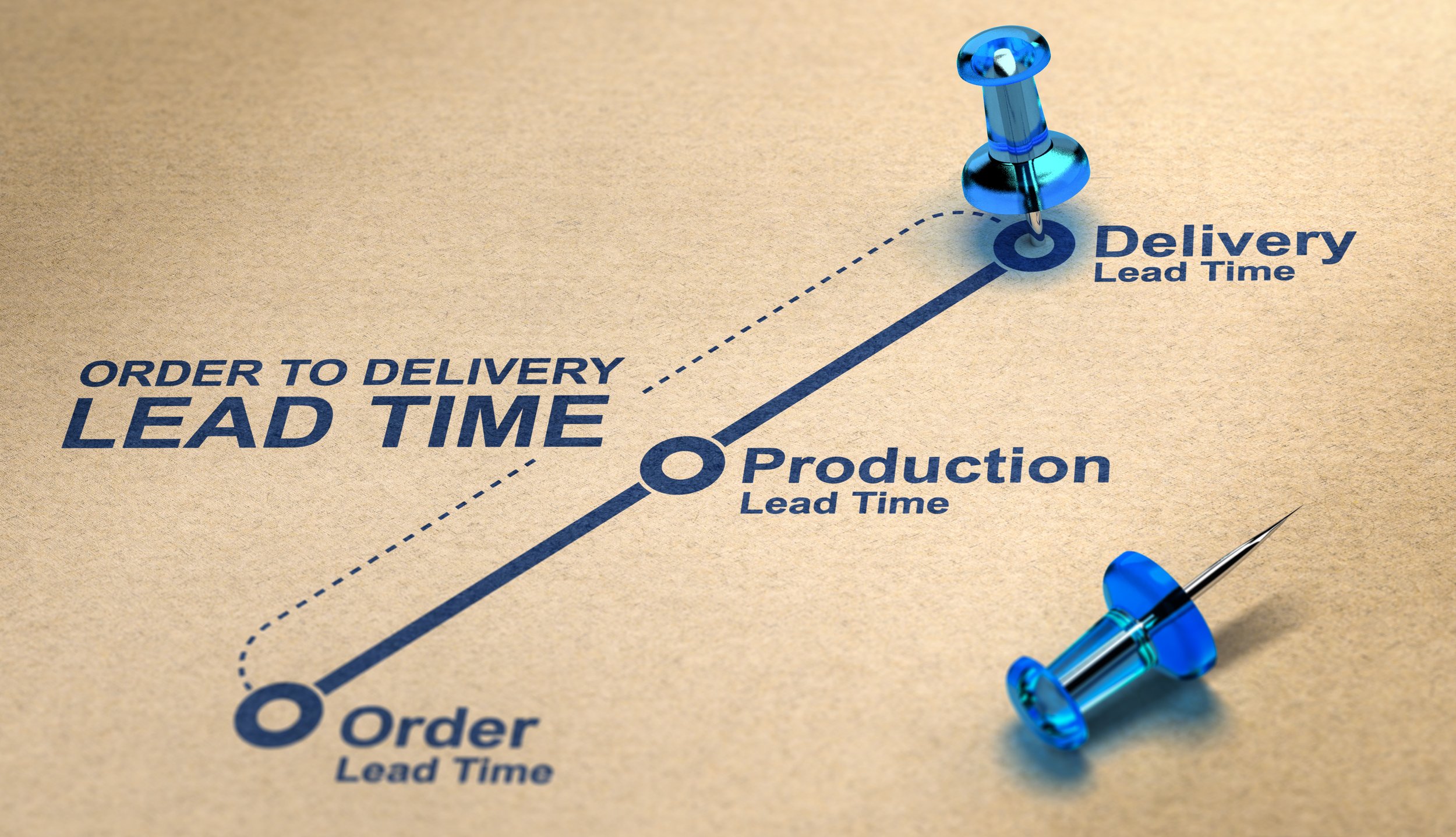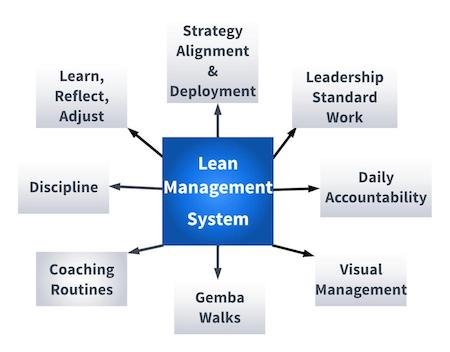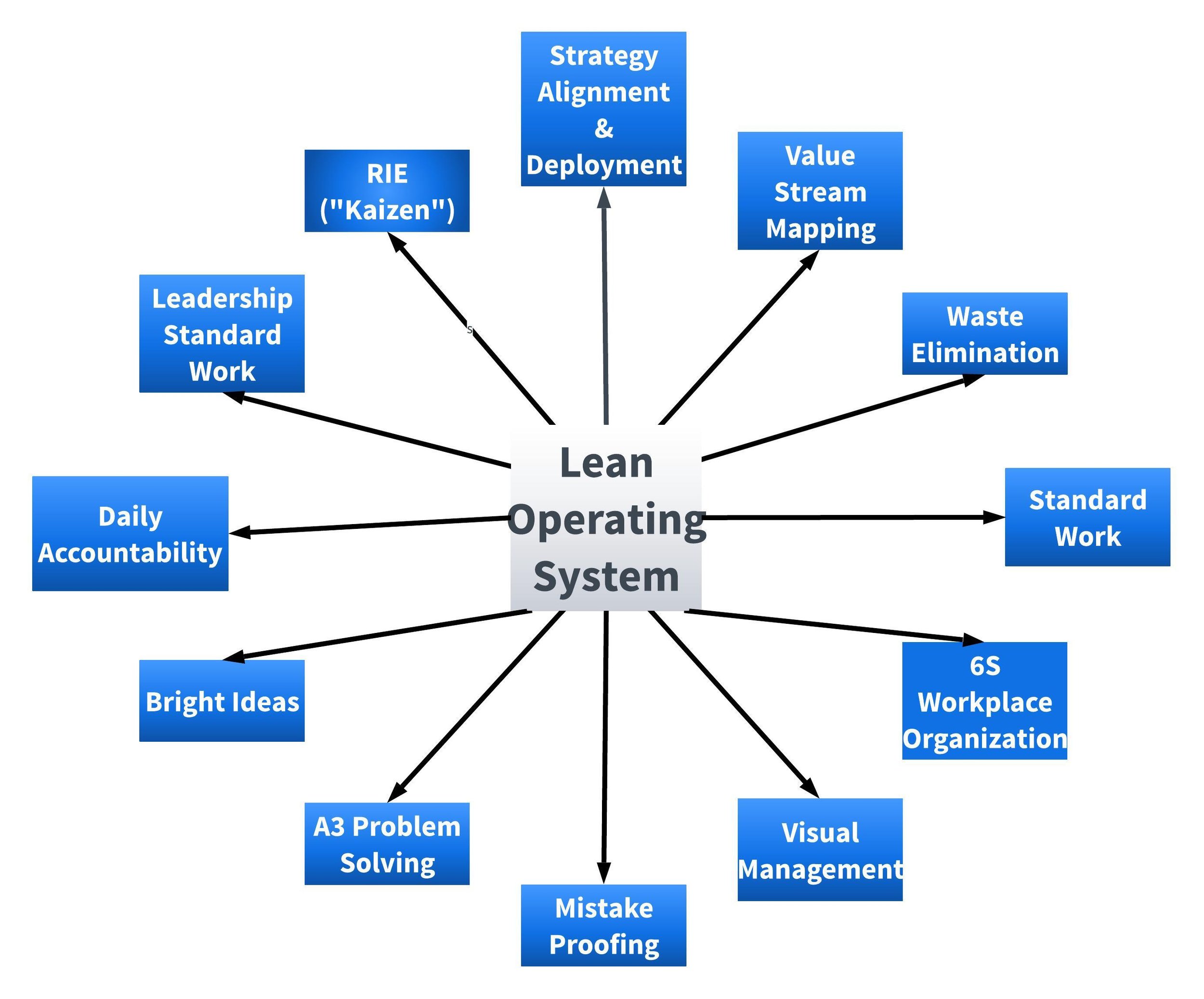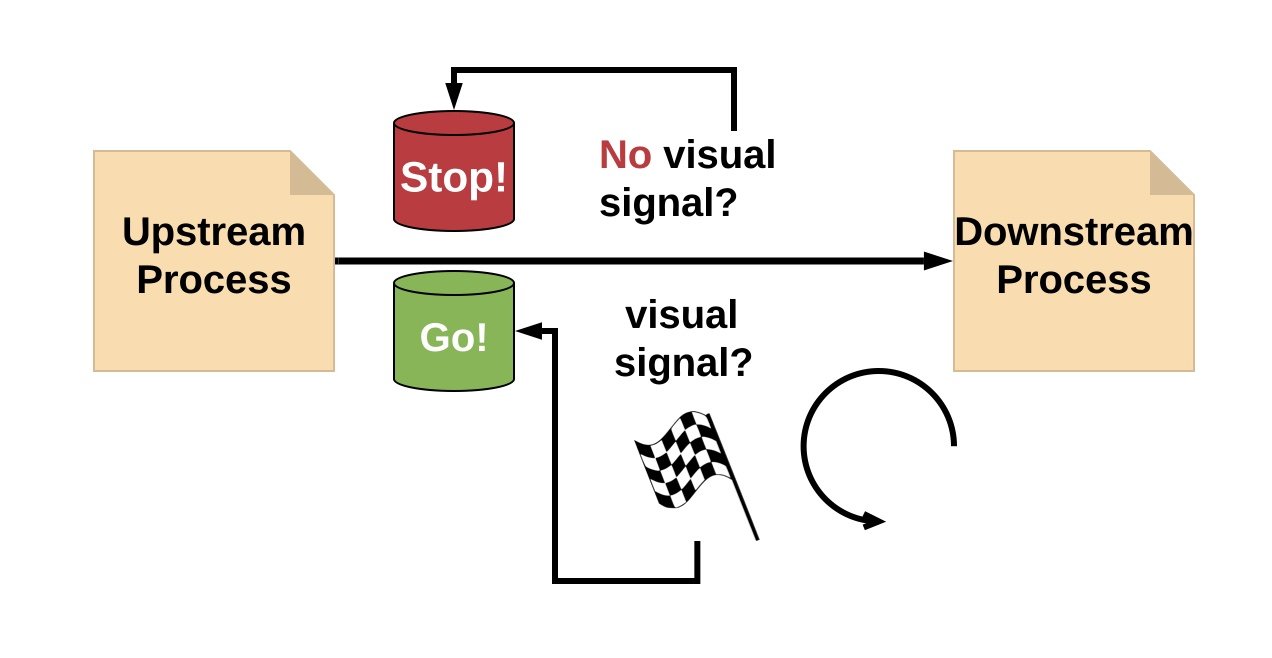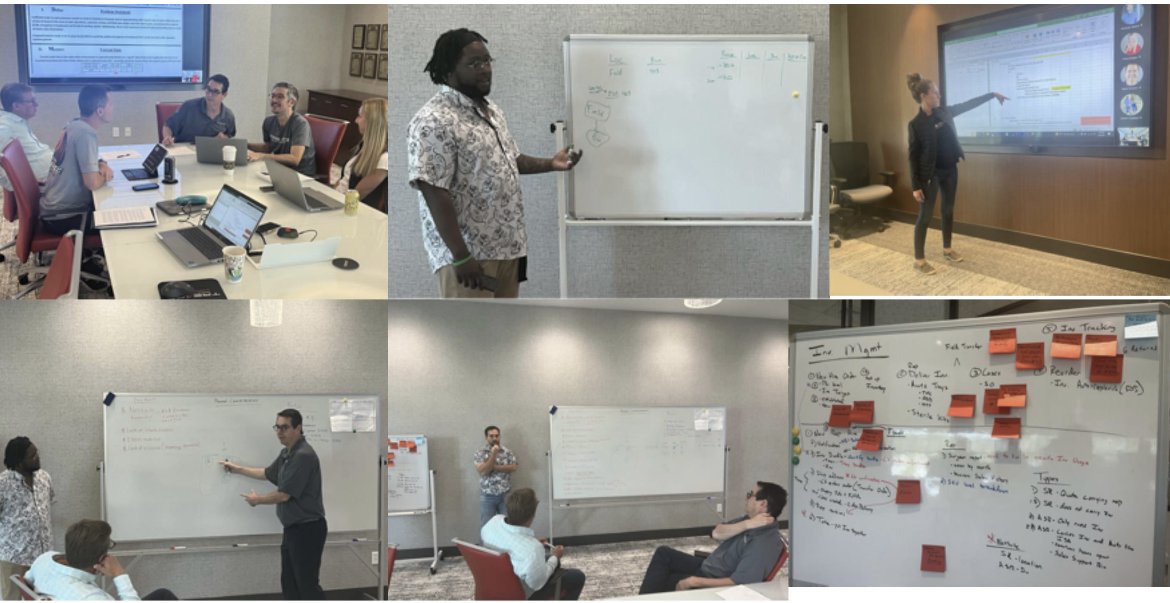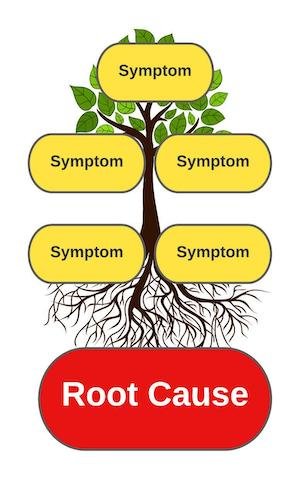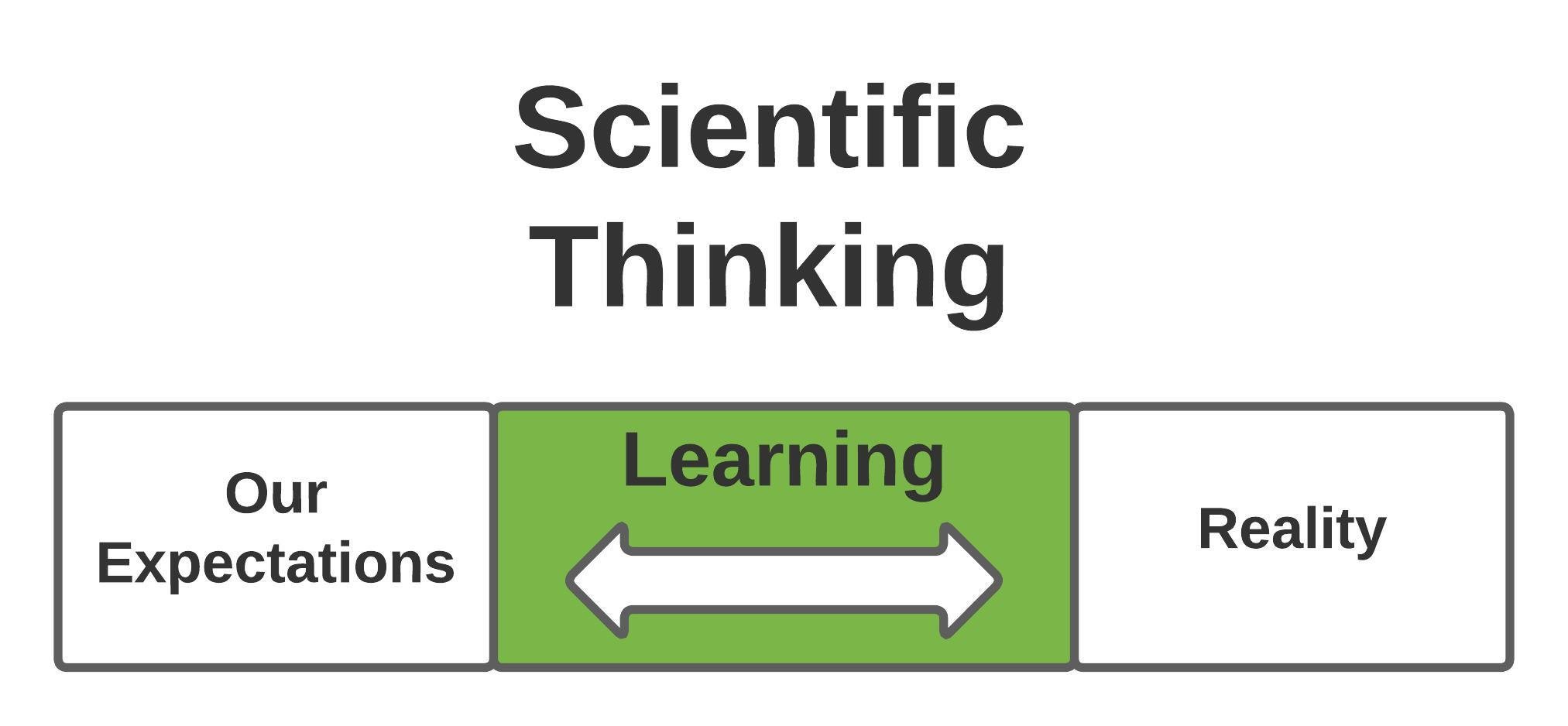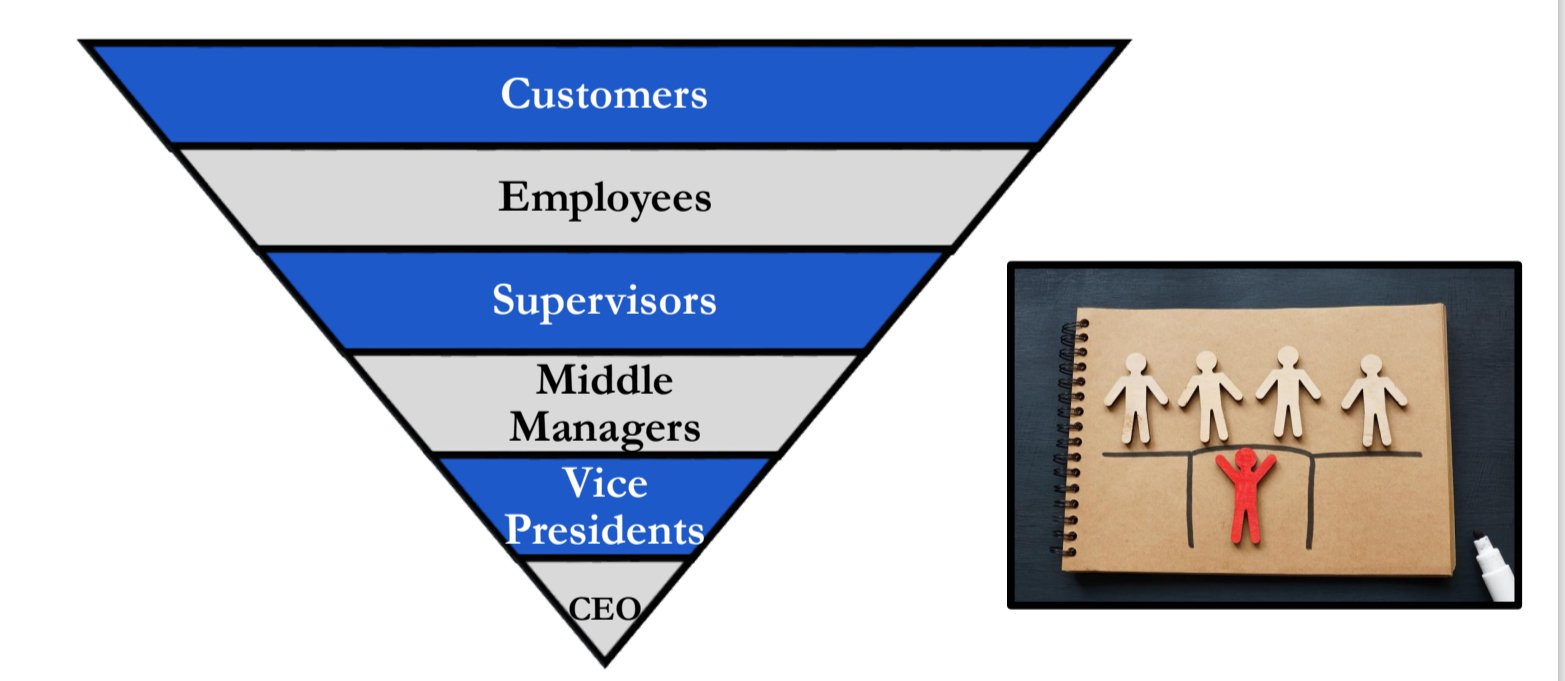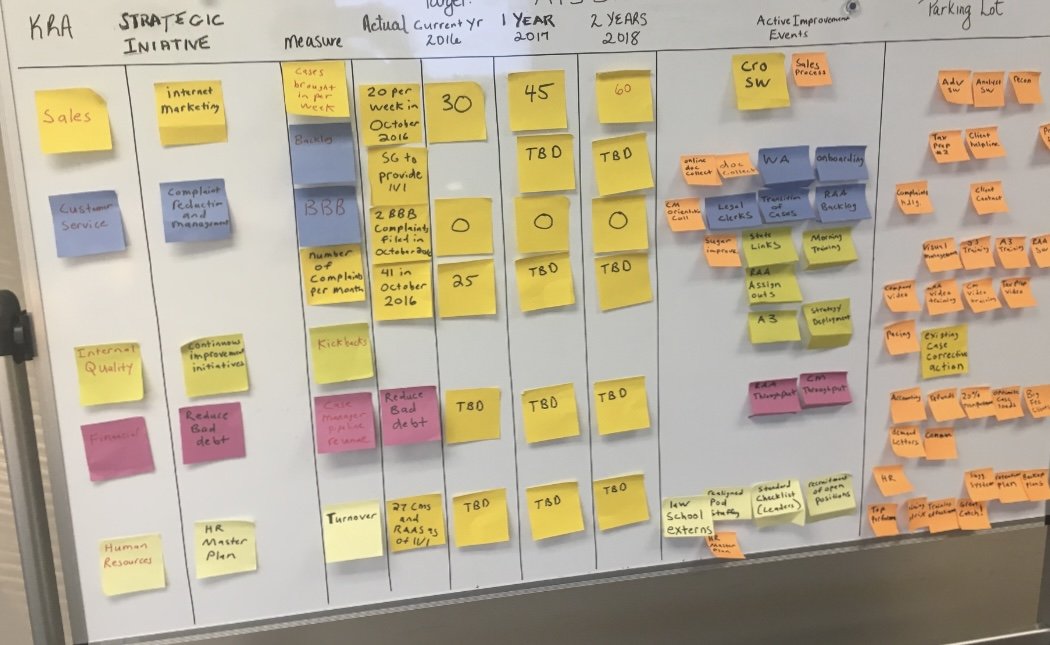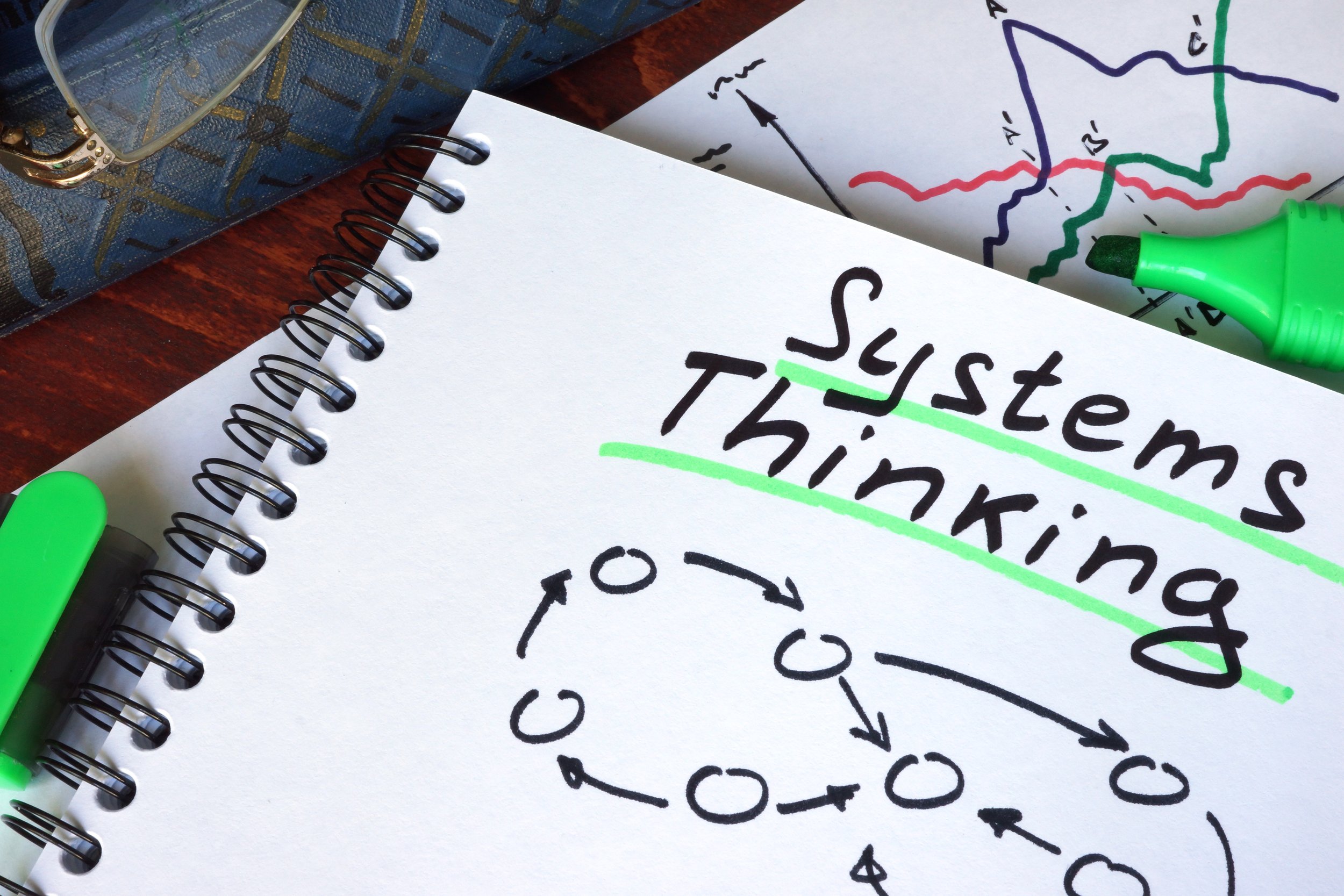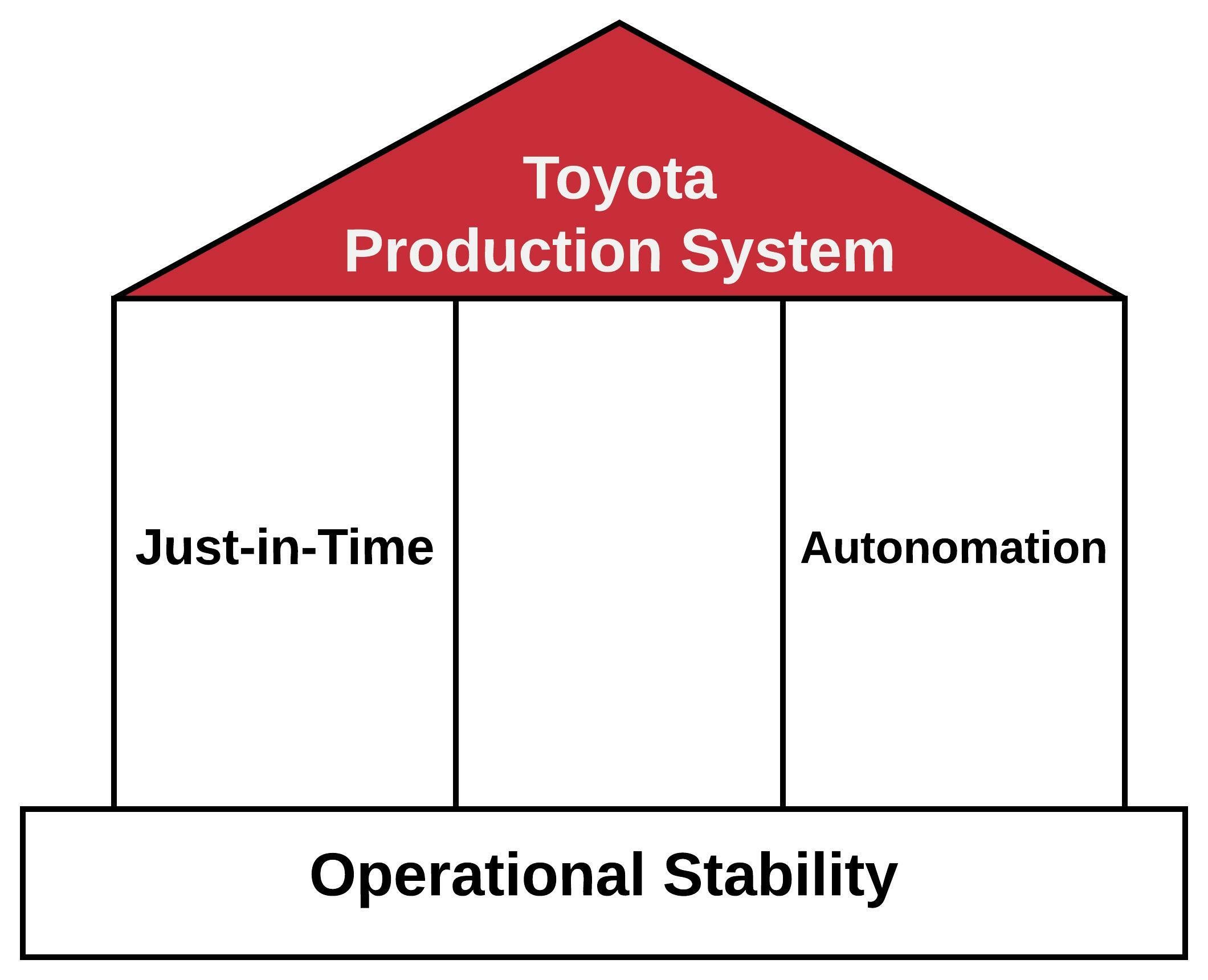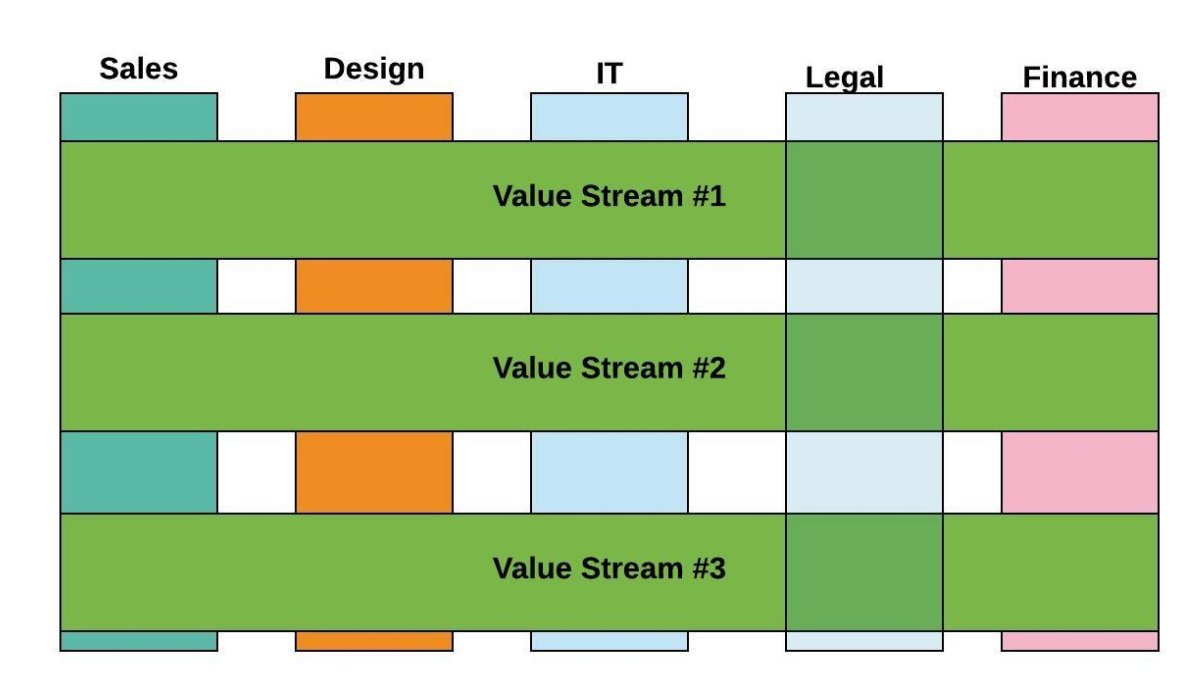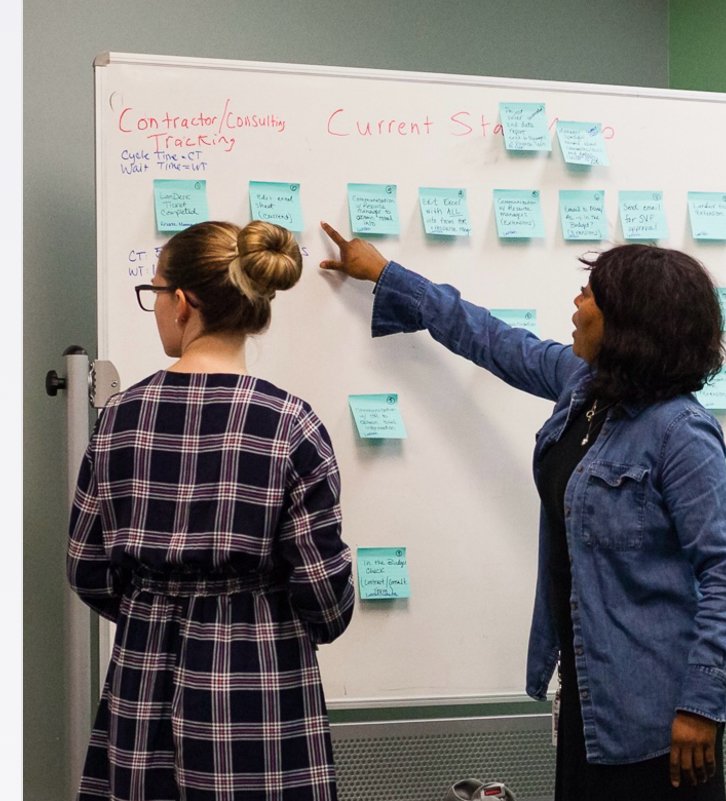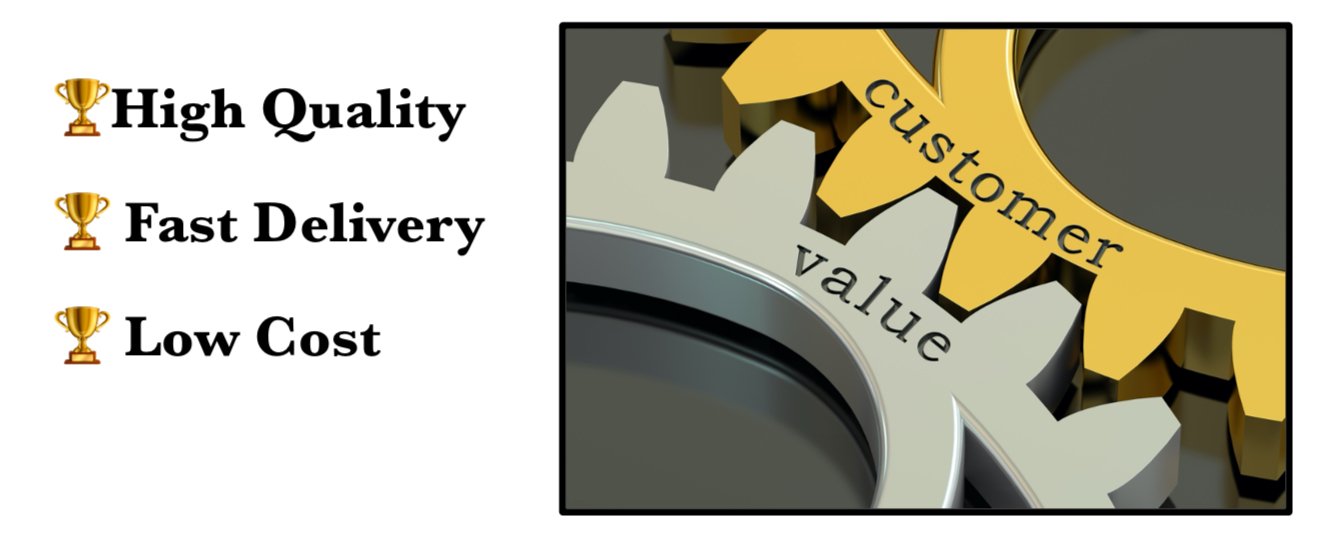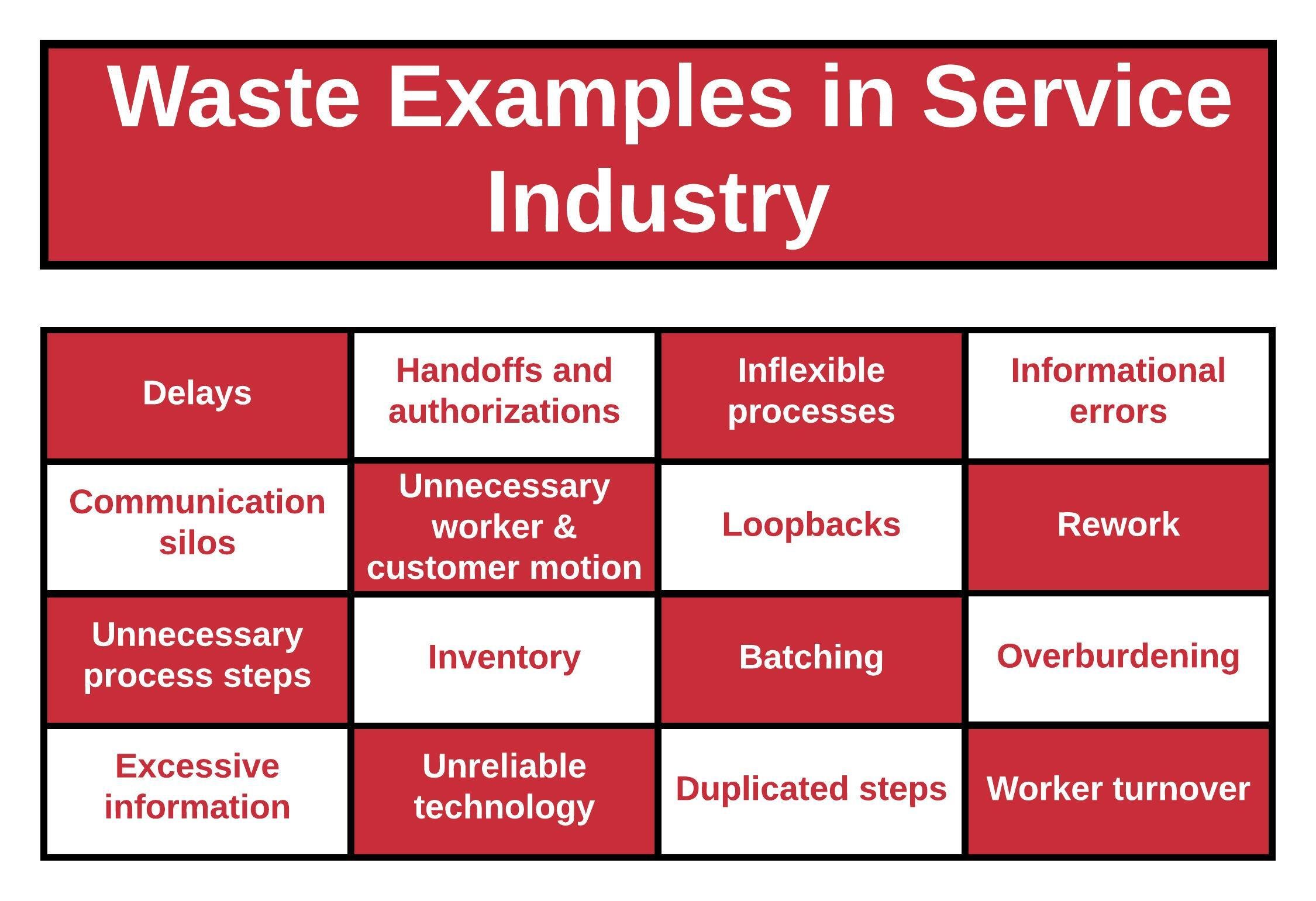Lean Jax's Lean Visual Glossary for Service Organizations
3 M
Three terms often used together in the Toyota Production System that collectively describe wasteful practices to be eliminated.
Muda: Waste— any activity that consumes resources but creates no value for the customer.
Mura: Unevenness— uneven workflows caused by fluctuating production volumes due to internal problems such as process downtime, defects, and part/supply shortages.
Muri: Overburdening - excessive demand on a system that causes the system to produce beyond its reasonable capacity. Pushing a machine or person beyond natural limits. Overburdening people results in safety and quality problems. Overburdening equipment causes breakdowns and defects.
6S Workplace Organization
Lean method for establishing and maintaining an orderly, clean, safe, and effective work environment through disciplined daily routines and visual management.
6S builds upon the traditional 5S framework (Sort, Set-in-order, Shine, Standardize, and Sustain) by incorporating Safety as the sixth pillar, and reinforcing its’ importance throughout the process.
This method sets the foundation for a thriving continuous improvement culture by promoting innovation, respect, discipline, and accountability at all levels.
A3 Problem Solving
A Toyota-pioneered practice of gathering the problem, the analysis, the corrective-actions, and the action plan down on a single piece (11 by 17) of paper.
A3s serve as the standard work document that guides problem-solving exercises, status reports, value stream mapping, rapid improvement events, and all other Lean improvements.
The A3 process enables teams to follow the scientific method and improve their work through experimentation, direct observation, root cause analysis, brainstorming, and implementation, and follow-up.
Backlog
The number of service requests waiting to start their process. These requests are often hidden in email inboxes, piles of paper, or management software; resulting in extended lead times for customers, high costs for companies, and constant disruption for workers.
Backlogs are often caused by reliance on push systems and batching.
Balancing the Line
The process of evenly distributing the quantity and variety of work across available work time, avoiding overburden and underuse of resources. This balance creates a smoother flow throughout a service organization’s value stream. Also known as production leveling.
Batching
The mass production approach to work in which batches of items or information are processed upstream and moved downstream--regardless of whether they are needed—where they wait in a Work-in-process (WIP) queue.
Batching often leads to costly mistakes. Since batches involve the processing of a considerable amount of information, problems are often hidden and may not be detected until after they are passed downstream.
Batching Examples in Service Organizations
❌❌ Inner-office mail gets delivered only once a day.
❌❌ Projects get forwarded only once per week.
❌❌ Reports get approved all at once.
❌❌ Payments are processed all at once.
❌❌ Purchase orders approved all at the same time.
❌❌Completing payroll the same day every month.
❌❌ Listening to a day’s worth of voicemails or responding to every email all at one time.
Bright Ideas Employee Suggestion System
Visual management system for promoting innovation through employee improvement suggestions. This system provides a standardized, visual way for workers to capture their process observations and improvement recommendations in the A3 format--focused on eliminating the 8 wastes and solving critical problems.
Capacity
The total available possible output of a system within current constraints. Capacity is essentially capability of a worker, system, or process within a specified time.
Most knowledge/service workers are bombarded with different duties and constraints that lead to overburdening and constant frustration.
Alternatively, information systems may exceed capacity through improper balancing of resources.
CEDAC
Acronym for Cause-and-Effect Diagram with Added Cards.
CEDAC is a problem-solving method that expands upon the typical fishbone structure by enabling teams to brainstorm countermeasures that address the root causes of a problem.
Cellular Layouts
Arranging all the steps of process adjacently and sequentially, to support continuous flow. The most common cellular layout in Lean environments is a U-shape (even in offices!) because it provides the flexibility to accommodate for changes in customer demand and it minimizes the wastes of waiting, motion, and transportation.
Change Management
The process organizations use to manage change, including planning, validating, and implementing change, and verifying effectiveness of change.
Changeover
The process of switching from one service process or project to another with minimal time and effort. One of the core goals of a Lean transformation is to continuously minimize the changeover time of processes within key value streams.
Co-location
Office or virtual settings where all a value stream’s functions work within proximity of each other. Co-location eliminates unnecessary motion and waiting, providing the ability for workers to collaborate, share knowledge, and timely receive necessary information.
Continuous Flow
The third Lean principle outlined by Womack and Jones.
Continuous flow involves moving one item at a time through a series of processing steps as continuously as possible, with each step making just what is requested by the next step.
Continuous flow exists when workflow moves through the process at a steady pace, from one value-added step to the next without delay. This is achieved in service organizations when once an order is received, the process continues uninterrupted until the order is satisfied.
Continuous Improvement
One of the two pillars of Lean Thinking, describes an organization with an active learning culture and engaged workforce. Everyone, everywhere, everyday workers are committed to providing exceptional customer value by relentlessly eliminating waste, collaboratively solving problems, and creatively seeking/deploying new and improved ways of working.
Continuous improvement organizations are learning organizations anchored by workers at all levels dedicated to continuously improving how work is done.
Countermeasures
Improvement actions taken to resolve an identified gap in performance needed to reach target conditions. Countermeasures are generated, prioritized, and selected to address the root causes discovered during A3 problem solving exercises.
Cross-training
Training people to perform a variety of tasks and skills to create flexibility and optimize the performance of a value stream. This enables service organizations to seamlessly adapt to any changes in customer demand.
Daily Accountability
Brief, structured, tiered meetings focused on team performance, with action items tracked visually. These meetings focus on the following:
Discussing today's assignments.
Running the business and improving the business.
Reviewing and tracking the performance of key result areas at a visual board.
Downstream
The process (often a separate department) that receives work from the preceding (upstream) process.
DMAIC
Reliable, repeatable approach to problem solving through scientific thinking; involves the following steps:
Define the problem.
Measure the current situation.
Analyze the gap between the desired results and the future state; discover the root cause; list all the options for closing the gap and select the best countermeasures for each root cause.
Improve by creating and executing an improvement plan.
Control the process to make the improvements stick.
ECRS
Process improvement technique used minimize, eliminate, and prevent reoccurrence of waste within any processes—an especially useful tool for developing standard work. ECRS is an acronym for:
Eliminate wasteful process steps that aren’t value-added in the eyes of the customer.
Combine disconnected or duplicate process steps to avoid unnecessary handoffs and rework, while reducing time, space, and resources needed.
Rearrange the sequence, timing, or inputs of process to create flow.
Simplify how the process steps are completed by creating clear, visual standard work.
Error Proofing
A proactive approach to detecting or preventing defects by designing and implementing creative devices and procedures. Also known as by the Japanese term Poka Yoke, translated to fool-proof.
First-In-First-Out (FIFO)
Describes the flow of materials, information, or people in a system where the first item/person to enter a queue is the first to leave the queue.
Service Examples:
The first patient to check-in with reception is the first person to see the doctor.
The first prescription a pharmacist receives is the first one processed.
The ingredients that were delivered the earliest are the first ones used by a restaurant.
Five Whys
The analytical practice of asking WHY repeatedly whenever a problem is encountered with the goal of moving beyond symptoms to discover the root cause of problem or issue.
Gap from Standard Problem Solving
Structured problem solving that focuses on specific problem definition, setting goals, root cause analysis, establishment of countermeasures, checks, standards, and follow-up activities.
Addressing gap from standard problems is often the focus of a RIE—the aim is to prevent the problem from recurring by eliminating its underlying causes.
Gemba
Japanese term for actual place, often refers to anywhere where value-creating work occurs. Service organization Gemba examples include offices, retail shop floors, virtual platforms, job sites, etc.
Gemba Walk
Lean leadership practice for grasping the current situation through direct observation and humble inquiry before acting.
Handoff
Act of releasing an output from a step or operation to the customer or production unit performing the next step in the operation.
Lean processes seek minimization of the number of handoffs between departments, as they are often non-value-added and are susceptible to opportunities for error.
Information Flow
The path information travels throughout a value stream.
Information System
Manual or computer-based system that conveys information to a work department throughout each day.
Most service organizations interact with a plethora of antiquated and unnecessary IT systems.
A James Bussell original.
Ishikawa (Fishbone) Diagram
Graphical display that shows and categorizes all the causes and sub-causes of a problem —used to organize and display the interrelationships of various theories of a root cause of a problem.
Job Instruction Sheet
A3 sized document posted at the workstation, used to train new workers on standard work for a process—illustrates a description of the process, required materials, key steps, best practices, safety/quality considerations, and a sketch of the layout.
Just-in-Time (“JIT”)
Service system that delivers just what is needed, when it’s needed, in the specific amount needed.
In many service organizations, information is the organizational asset that needs to be delivered JIT.
Kaizen
Japanese word referring to an opportunity for continuous improvement achieved by making incremental changes.Two Types of Kaizen:
Systems Kaizen: Management led attempts aimed at improving the overall value stream by enhancing material and information flow.
Process Kaizen: Team-based approach aimed at eliminating waste and making improvements in specific areas within the value stream.
Kaizen Bursts
During value stream mapping exercises, these icons are used to indicate the specific process improvement countermeasures a team identifies to help achieve the goals detailed on the future state value stream map and improvement plan.
Kanban
Japanese term meaning “signboard” that is used as a communication tool in Lean systems. Visually signals upstream workers when to advance work downstream.
The purpose of kanban is to create a buffer to synchronize two disconnected processes and control the flow of material or information.
Kanban Board
A visual management device (often used during daily huddles) that helps teams quickly visualize and review their work, allocate responsibility, prioritize tasks, and share resources. These boards can be adapted to fit the specific area or team’s needs.
Kata
A structured routine you deliberately practice as a beginner, so its’ pattern becomes an ingrained habit. Two types of Kata:
Improvement Kata: Routine of establishing challenging target conditions, working step-by-step through obstacles, and always learning from the problems we encounter.
Coaching Kata: Pattern of teaching the improvement kata to employees at every level to ensure it motivates their ways of thinking and acting.
Knowledge Sharing
Also known by Japanese term Yokoten, it’s the practice of aligning key actions and sharing best practices across functional areas, emphasizes learning at an organizational level.
Strategy deployment is the most effective example of knowledge sharing used by Lean organizations. Other key Yokoten examples include work plan meetings, daily huddles, and retrospectives.
The picture below shows a design-build construction charette, a collaborative meeting where all the stakeholders involved in the project share knowledge and develop a plant to ensure it’s successful.
Knowledge Worker
Any worker who acquires information from tasks, then analyzes and validates that information, and stores it for future use.
This includes lawyers, doctors, academics, editors, scientists, engineers, architects, pharmacists, accountants, financial advisors, and IT professionals.
Most knowledge workers are bombarded with too much unnecessary information and struggle to receive the critical information they need to do their jobs JIT.
Leadership Standard Work (“LSW”)
Standardized checklists for leaders at various levels (team leaders, supervisors, managers, and executives) that includes recurrent responsibilities.
LSW provides a structure and routine for leaders at various levels to achieve consistent outcomes by practicing optimal behaviors and completing tasks aligned with the enterprise’s goals.
LSW template
Lead Time
The total time it takes a product or service to go through an entire process or end-to-end value stream; including all interruptions, waiting, rework, and delays.
Lead time is the most important metric for service organizations to improve and through Lean improvements, it can easily be cut by more than 50%.
Lean Culture
Organizational culture anchored by the 4Ps developed by Toyota:
Purpose/Philosophy: Create a constancy of purpose through systems thinking to provide value to customers and society.
Process: Maintain smoothly flowing value streams to deliver value to the customer.
People: Engage every employee touching the value streams to become proactive in continuously growing their capabilities and improving their work.
Problem Solving: “Everyone, everywhere, every day,” leveraging scientific thinking to continuously improve their work for the benefit of the customer.
Lean Management System
A series of interconnected practices that develops people to understand and own their problems and aligns resources to achieve the purpose of the organization. Lean management systems engage everyone, everywhere, everyday in designing processes to continuously solve problems, improve performance, and achieve purpose while consuming the fewest possible resources.
Lean Operating System
The playbook for effectively implementing Lean in a service organization.
The goal of the Lean Operating System is to deliver the highest quality to the customer, at the lowest cost, in the shortest lead time, while maintaining a safe work environment with high morale.
Lean Principles
The five principles for implementing Lean in an organization, outlined by Womack and Jones in their book, Lean Thinking.
The customer defines value.
Identify and map your organization’s value streams.
Create flow throughout each value stream.
Deploy pull systems (no one upstream should produce a good or service until the customer requests it).
Pursue perfection.
Lean Promotions Office
An internal resource team that champions and drives an organization's Lean transformation by providing systematic continuous improvement training and support to the company's interconnected value streams.
Lean Thinking
A systematic, enterprise-wide strategy for pursuing excellence and accelerating growth through continuous improvement and respect for people.
Lean Transformation Framework
The proven, systematic approach to resolving problems at every level of an enterprise, from executive-level strategy to frontline operations. Answering the five guiding questions listed below can help any organization accelerate its’ Lean transformation--aligning its’ purpose, processes, and people on a path to operational excellence.
What problem are we trying to solve? How will we improve? How will we develop the people? What leadership behaviors and management systems is required? What basic thinking, mindsets, or fundamental assumptions support or undermine our Lean transformation?
Learning Organization
Defined by Peter Senge, in his book The 5th Discipline, “as a place where people continually expand their capacity to create the results they truly desire, where new and expansive patterns of thinking are nurtured, where collective aspiration is set free, and where people are continually learning to learn together.”
Operational Excellence
An enterprise-wide business strategy that focuses on continuously improving processes, systems, and organizational culture to achieve optimal performance.
Operational excellence involves seeking long-term success by optimizing workflows; eliminating waste; and improving productivity, quality, and customer satisfaction.
The goal of operational excellence is for an organization to create a culture of continuous improvement, innovation, and respect, where every employee is empowered to identify and solve problems, and the organization can consistently deliver exceptional value to its’ customers.
Pareto Chart
A graphical tool for ranking causes from most significant to least significant. It is based on the Pareto principle, named after 19th century economist Vilfredo Pareto, and suggests that most effects come from relatively few causes; that is, 80% of the effects come from 20% of the possible causes. Also known as the "80-20 rule” or “law of the vital few.”
Point-of-Use (“POU”)
The condition in which all necessary supplies or information are within reach and positioned in the sequence in which they are used.
POU is often established during the set-in-order phase of a 6S campaign to help improve safety, quality, delivery, and employee morale for an organization’s services.
Process Time
Represents the total time it takes to complete each segment of the value stream uninterrupted; often referred to as cycle time or value-added-time.
Project Charter
Standard work roadmap required for Lean improvement projects such as value stream mapping, workplace organization, and RIE; serves as a justification to apply organizational resources to Lean projects through leadership and team buy-in.
Typical project charters are developed in the project preparation phase and includes information about the problem definition, project scope, objectives, metrics, team members, necessary resources, risks, roles and responsibilities, and deliverables.
Pull
The fourth Lean principle outlined by Womack and Jones; Pull is a method of advancing work only when the next in line customer is ready to use it. A request from the customer signals that the work is needed and is pulled from the performer. Pull systems are composed of three elements:
Visibility of work queues.
WIP limits and rules.
Worker managed visual signals.
Push
Advancing work (moving it downstream) based on a centralized, forecasted schedule. Involves releasing materials, information, or directives irrespective of whether the downstream process is ready to process them.
Push systems are especially common in transactional processes, including, scheduling, invoicing, and procurement.
Quality
Consistently providing a service that meets customers’ expectations and that is fit for the purpose intended.
Our customers are only willing to pay for work that is done right the first time.
Rapid Improvement Event (“RIE”)
Also known as Kaizens, RIE are structured, Lean improvement events that align with an organization’s key result areas and overall strategies.
The most effective RIE are completed in a condensed period, endorsed by an executive sponsor, led by a team champion, guided by a facilitator, and anchored by a cross-functional team that’s challenged to leverage Lean methods to reach stretch improvement goals.
Respect for People
One of the two pillars of lean thinking; describes a culture that provides people at all levels with the ability to learn, grow, and actively contribute to the organization’s purpose and mission.
Rework
One type of work iteration, where work that was done before must be done again because of a defect somewhere in the process.
Most service organizations are inundated with constant rework caused by process complexity, lack of standardization/prioritization, poor communication, multitasking, and overburdened workers/teams.
Root Cause
A root cause is the fundamental breakdown or failure of a process which, when resolved, prevents a recurrence of the problem—it’s the dominant contributor to the problem’s existence.
The three most common root causes in service organizations are: non-existent standards; ineffective standards; or non-compliance with established standards.
Root Cause Analysis
Systematic, collaborative approach to identify the root cause of a problem with the goal of generating, then implementing countermeasures that will prevent the problem’s reoccurrence.
Root cause analysis is one of the most important aspects for creating the problem-solving culture required for successful Lean transformations, thus, it is a necessary skill for workers throughout an organization to learn.
Scientific Thinking
Fact-based, iterative, learn-by-doing problem-solving approach; involves the cycle of making predictions, observing reality, and adjusting based on what we learn.
Two common methods for scientific thinking used by Lean organizations are DMAIC and PDCA.
Visual adapted from Liker, Jeffrey K. The Toyota Way 2nd Edition. McGraw Hill, 2021.
Servant Leadership
Leadership philosophy that focuses primarily on the growth and well-being of people and their communities. Servant leaders are positioned at the bottom of an organization’s inverted pyramid, tasked with supporting those who deliver value-added work to the customer.
The most successful Lean organizations are led by individuals who lead through responsibility rather than authority, putting the needs of others first and helping people develop and perform as effectively as possible.
Service Family
Processes with similar steps, customers, departments, personnel, time, and pain points. The identification/selection of service families ensures that value stream mapping and RIE exercises do not exceed a manageable scope.
Service industry examples: Mortgage applications that are all processed through a central loan center; professional licenses that share similar steps.
SIPOC (Supplier—Inputs—Process—Outputs—Customer)
This is a standard work method for improvement teams to identify all relevant elements of value stream and/or process. SIPOC provides an understanding of who is involved, how they contribute, and includes all the steps of the process.
Spaghetti Diagram
Diagram of the path taken by a product (or service) as it travels through the steps along a value stream-- received this name because in mass production organizations the route of products/services often looks like a plate of spaghetti due to the value stream’s instability.
Standard Work
Represents the best way we know how to do an activity. Effective standard work is developed by workers who perform the process; is clear, concise, and visual; and includes: the sequence of steps to follow, the timing, and the resources needed to keep the process flowing smoothly.
The use of standard work promotes process stability (tasks are competed accurately and on-time), preserves organizational learning, and serves as the baseline for all continuous improvement. There are three elements of standard work:
Takt Time: The rate of customer demand.
Work Sequence: The sequence of steps needed to complete a process.
Necessary Resources: The material and information needed to do the job
An example of a standardized work chart for making French press coffee. Another James Bussell original.
Strategy Deployment
An enterprise-wide method for aligning continuous improvement objectives with a company’s vision, purpose, and key result areas.
Strategy deployment is a visual management system that enables organizations to visualize, prioritize, select, and manage critical improvement efforts, then cascade improvement through all levels of the organization.
Systems Thinking
The ability to view the interconnected processes that make up the value stream and obtain knowledge of all the cause-and-effect interdependencies that either add value or create waste.
Target Condition
A goal or future state that includes the desired outcome performance, desired operating pattern, and timeline to complete.
Target conditions are captured on A3 reports and improvement actions strive to bridge the gap between current performance and desired performance.
Target Setting Problem Solving
Continuous improvement that raises the bar; surpassing existing levels or standards of performance.
Toyota Production System: (“TPS”)
Toyota’s approach to manufacturing and the basis of Lean production. Developed by Taiichi Ohno (1912-1980) the TPS approach provides Toyota with the ability to produce high quality products consistently and expeditiously at the rate of customer demand.
True North
An organization’s guiding principles that serve as its’ compass, providing direction and clarity to all employees.
Upstream
Refers to the series of activities or tasks that occur earlier in the service delivery chain prior to customer delivery.
These processes are typically internal to the organization and are essential for setting the stage for the successful delivery of services. Service industry examples include Sales, Procurement,Estimating, and Customer Service.
Lean thinkers focus much of their energy on establishing quality at the source to prevent defects from reaching downstream processes, where their detrimental effects are compounded.
Value
Specific product or service that meets a customer’s needs at the right price at the right time in the right quantity. Value is defined by the customer.
Value Stream
All the actions required to take a customer’s order, produce the product or service, and deliver it to the customer.
Value streams are often cross-functional and involve problem solving, information management, and physical transformation tasks.
Lean value streams consist of minimal waste and provide the customer with the right service, in the right quantity, at the right time.
Examples of value streams in the service sector include:
Value Stream Mapping
The process of diagraming and analyzing the steps of a value stream--the material and information flows needed to bring a product or service from order to delivery. The three value stream mapping phases:
Current State: Follows a product or service from order to delivery to determine the value stream’s current conditions.
Ideal State: An aspirational vision of a value stream composed of 100% value-added time.
Future State: The value stream as it realistically should be, with as much waste eliminated and the percentage of value-added time as high possible.
Value stream mapping in the finance industry.
Visual Management
A method of sharing information where everyone is made aware of the status of the work and is easily able to spot abnormal conditions—a gap from current and expected conditions.
Effective visual management systems create a work environment where what’s supposed to happen, does happen, on-time, every time. Visuals become visual management when they’re used to immediately trigger action when abnormal conditions arise.
Voice of the Customer (VOC)
Refers to the needs and desires of customers, including product features, service requirements, and customer expectations.
In Lean organizations, the customer defines value so VOC must drive every process.
Waste
Any action, task, process, or product that adds time and cost without adding value as determined by the customer.
In service organizations, waste is often hidden within inboxes and various information systems.
